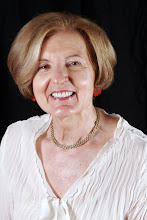In design the process can be as important as the end product
When I began my quest to "level the playing field", and give every team member an equal voice, one of my first connections was Turid Horgan. Turid is a Norwegian architect, and when we first connected, she was a research associate at MIT. Turid had come to MIT on a Fulbright fellowship to explore and advance "process architecture". When Turid practiced in Norway, she used "process architecture" in her work. Her projects ranged from community planning to work space planning and she carefully designed a process that would engage all stakeholders. Stakeholer group interaction was focused on a series of staged design games.
Turid's host and collaborator at MIT was Don Schon, one of the more accomplished and most published among MIT's wide spectrum of internationally acclaimed faculty. During the later stages of his career, Schon observed and documented a number of creative processes, such as composing music. It was a synergistic match, a process designer and a highly respected process aficionado. Together, Horgan and Schon began to dissect, document and apply process architecture in a number of settings. Their work together is described in the book, "Excellence by Design, Transforming Work Places and Work Processes".
Fast forward four years. We have been testing and developing our ideas about optimizing team performance, and exploring a number of ways to fund our work. I presented our interest in optimizing team work to the National Science Foundation, and they put me in touch with Dr. Robert Knecht at Colorado School of Mines, who has completed some foundational work in team performance. Bob Knecht has measured team performance in his project-based freshman design studio for a number of years. The teams producing the highest quality projects are teams who are facile twelve skills, six project-based skills and six relationship-based or "process" skills. This link back to the design process felt as if I looped back to where I began, wiser and with a deeper foundation.
In Bob Knechts pilot projects, applications of each of the twelve skills were counted by team observers.
For people who are interested, the task functions Bob Knecht "counted" were initiating, information seeking, information giving, clarifying or elaborating, summarizing, and consensus testing. The six process skills are encouraging, harmonizing, modifying, gate keeping, expressing group feelings and evaluating.
Turid's host and collaborator at MIT was Don Schon, one of the more accomplished and most published among MIT's wide spectrum of internationally acclaimed faculty. During the later stages of his career, Schon observed and documented a number of creative processes, such as composing music. It was a synergistic match, a process designer and a highly respected process aficionado. Together, Horgan and Schon began to dissect, document and apply process architecture in a number of settings. Their work together is described in the book, "Excellence by Design, Transforming Work Places and Work Processes".
Fast forward four years. We have been testing and developing our ideas about optimizing team performance, and exploring a number of ways to fund our work. I presented our interest in optimizing team work to the National Science Foundation, and they put me in touch with Dr. Robert Knecht at Colorado School of Mines, who has completed some foundational work in team performance. Bob Knecht has measured team performance in his project-based freshman design studio for a number of years. The teams producing the highest quality projects are teams who are facile twelve skills, six project-based skills and six relationship-based or "process" skills. This link back to the design process felt as if I looped back to where I began, wiser and with a deeper foundation.
In Bob Knechts pilot projects, applications of each of the twelve skills were counted by team observers.
For people who are interested, the task functions Bob Knecht "counted" were initiating, information seeking, information giving, clarifying or elaborating, summarizing, and consensus testing. The six process skills are encouraging, harmonizing, modifying, gate keeping, expressing group feelings and evaluating.


